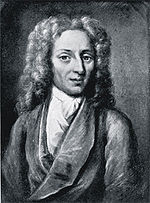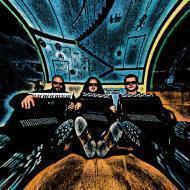When a detailed history of computer science in Britain comes to be written, one name that should not be forgotten is Mervyn O. Pragnell. As far as I am aware, Mervyn Pragnell never held any academic post and he published no research papers. However, he introduced several of the key players in British computer science to one another, and as importantly, to the lambda calculus of Alonzo Church (Hodges 2001). At a time (the 1950s and 1960s) when logic was not held in much favour in either philosophy or pure mathematics, and before it became to be regarded highly in computer science, he studied the discipline not as a salaried academic in a university, but in a private reading-circle of his own creation, almost as a guerrilla activity.
Pragnell recruited people for his logic reading-circle by haunting London bookshops, approaching people he saw buying logic texts (Bornat 2009). Among those he recruited to the circle were later-famous computer pioneers such as Rod Burstall, Peter Landin (1930-2009) and Christopher Strachey (1916-1975). The meetings were held after hours, usually in Birkbeck College, University of London, without the knowledge or permission of the college authorities (Burstall 2000). Some were held or continued in the neighbouring pub, The Duke of Marlborough. It seems that Pragnell was employed for a time in the 1960s as a private research assistant for Strachey, working from Strachey’s house (Burstall 2000). By the 1980s, he was apparently a regular attendee at the seminars on logic programming held at the Department of Computing in Imperial College, London, then (and still) one of the great research centres for the application of formal logic in computer science.
Pragnell’s key role in early theoretical computer science is sadly under-recognized. Donald MacKenzie’s fascinating history and sociology of automated theorem proving, for example, mentions Pragnell in the text (MacKenzie 2001, p. 273), but manages to omit his name from the index. Other than this, the only references I can find to his contributions are in the obituaries and personal recollections of other people. I welcome any other information anyone can provide.
UPDATE (2009-09-23): Today’s issue of The Guardian newspaper has an obituary for theoretical computer scientist Peter Landin (1930-2009), which mentions Mervyn Pragnell.
UPDATE (2012-01-30): MOP appears also to have been part of a production of the play The Way Out at The Little Theatre, Bristol in 1945-46, according to this web-chive of theatrical info.
UPDATE (2013-02-11): In this 2001 lecture by Peter Landin at the Science Museum, Landin mentions first meeting Mervyn Pragnell in a cafe in Sheffield, and then talks about his participation in Pragnell’s London reading group (from about minute 21:50).
UPDATE (2019-07-05): I have learnt some further information from a cousin of Mervyn Pragnell, Ms Susan Miles. From her, I understand that MOP’s mother died in the Influenza Pandemic around 1918, when he was very young, and he was subsequently raised in Cardiff in the large family of a cousin of his mother’s, the Miles family. MOP’s father’s family had a specialist paint manufacturing business in Bristol, Oliver Pragnell & Company Limited, which operated from 25-27 Broadmead. This establishment suffered serious bomb damage during WW II. MOP was married to Margaret and although they themselves had no children, they kept in close contact with their relatives. Both are remembered fondly by their family. (I am most grateful to Susan Miles, daughter of Mervyn Miles whose parents raised MOP, for sharing this information.)
References:
Richard Bornat [2009]: Peter Landin: a computer scientist who inspired a generation, 5th June 1930 – 3rd June 2009. Formal Aspects of Computing, 21 (5): 393-395.
Rod Burstall [2000]: Christopher Strachey – understanding programming languages. Higher-Order and Symbolic Computation, 13: 51-55.
Wilfrid Hodges [2001]: A history of British logic. Unpublished slide presentation. Available from his website.
Peter Landin [2002]: Rod Burstall: a personal note. Formal Aspects of Computing, 13: 195.
Donald MacKenzie [2001]: Mechanizing Proof: Computing, Risk, and Trust. Cambridge, MA, USA: MIT Press.
 Nicolas Fatio de Duillier (1664-1753) was a Genevan mathematician and polymath, who for a time in the 1680s and 1690s, was a close friend of Isaac Newton. After coming to London in 1687, he became a
Nicolas Fatio de Duillier (1664-1753) was a Genevan mathematician and polymath, who for a time in the 1680s and 1690s, was a close friend of Isaac Newton. After coming to London in 1687, he became a 
